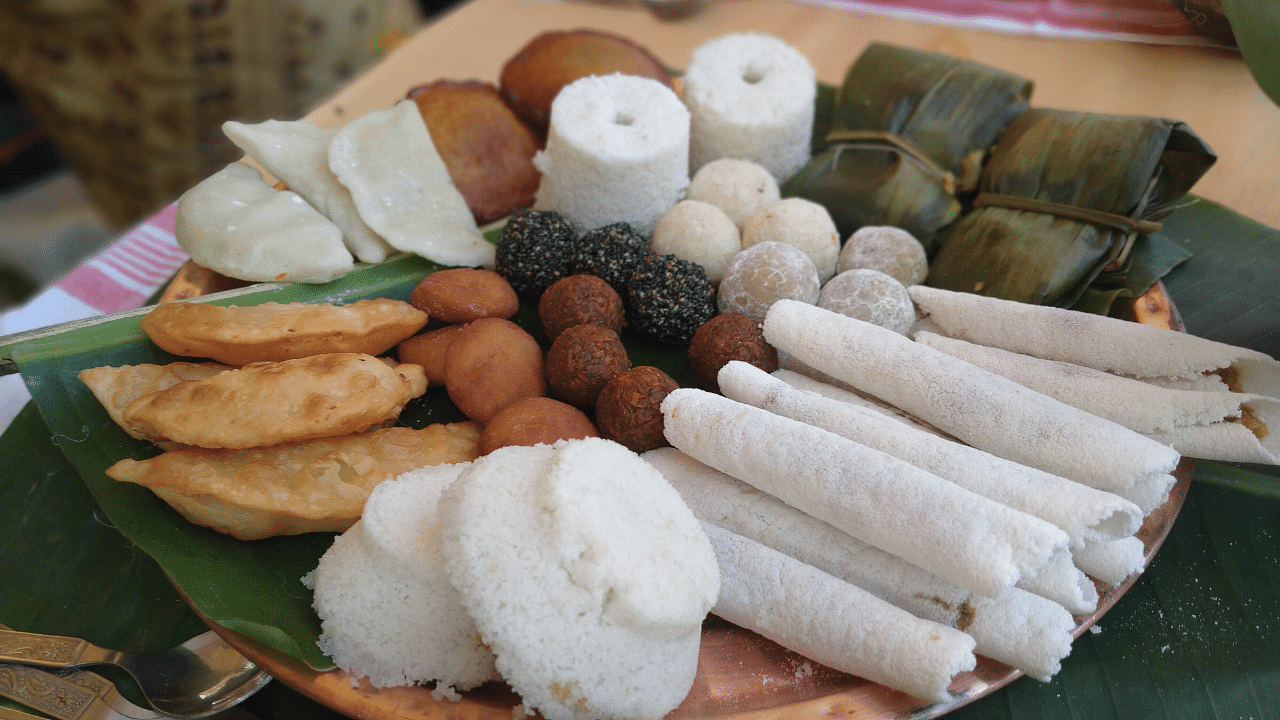
These days, there is a renewed interest in indigenous delicacies for their clean, unadulterated flavours and the rich culinary tradition they carry.
One of these traditional dishes is the pitha. Made with ingredients like rice flour, milk, coconut and jaggery, this delicious snack is often dipped in sweet syrups such as date palm molasses.
In Assam, the word pitha is associated with "pithaguri," which alludes to the ground rice flour that is crushed in a wooded dheki (a tool used for threshing rice).
The origin of this dish goes back to ancient times and has a culinary connection with the rice cakes from southeast Asian countries like Thailand, Burma, and Bangladesh.
Pitha holds a great cultural significance in Assam, as no Bihu (harvest festival) celebration is complete without preparing this sweet dish that symbolizes the cultural identity and staple food of the region.
“A signature Assamese pitha is the til (sesame) pitha prepared by stuffing a rice flour crepe with a mixture of black sesame and jaggery. It is dry-roasted and made by the ladies of the house during the Bohag Bihu and Bhogali Bihu festivals. It is served with a cup of Assam red tea,” said Dr Geeta Dutta, a food expert, and researcher of northeastern cuisine.
She mentions another variety called "tekeli mukhot diya pitha,” which is a steamed rice cake with fillings like black sesame seeds, jaggery, and grated coconut. The mixture is wrapped in a light cotton cloth and steamed in the mouth of a pitcher called the tekeli. It is a common breakfast item.
“The nangol dhuwa pitha, holds a great significance in agricultural life. Villagers gather together after the ploughing season to grind the rice and stuff them with fillings,” said Dr Dutta. “These rice sweets are wrapped in aromatic ‘tora’ leaves and steamed. Once the land is ploughed, the plough is washed and kept for the next season, and the nangol dhuwa pitha is consumed to strengthen the body after hard work in the fields.”
Also Read | For a modern Indian twist to food...
Variations across states
Different versions of sweet and savoury pitha or rice flour cakes are popular as a teatime or breakfast dish in the states of Assam, Bengal, Orissa, Bihar, Tripura, Nagaland, Manipur, Meghalaya, and Kerala.
While some varieties like the teler (oil) pitha can be made at any time of the year in Bengal, there are special versions like golap pitha (rose) and tal (palm) pitha that are only prepared during the harvest festivals of nabanna and the poush parbon (Makar Sankranti).
In Meghalaya, the putharo, puklein, and sarin (of the Garo tribe) are famous varieties of rice cakes.
Enduri pitha of Odisha is of great cultural significance because it’s prepared in Odia households on the occasion of Prathamastami Puja. The Bihari dal pitha is a version of savoury dumplings prepared using a lentil mixture as filling.
Watch the latest DH Videos here: